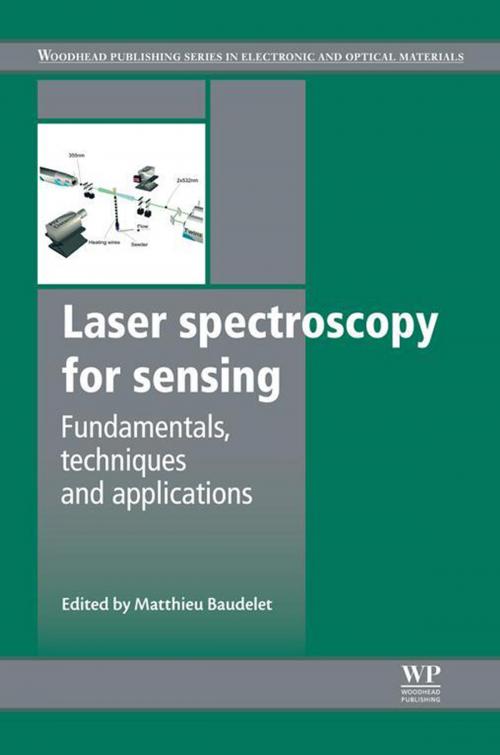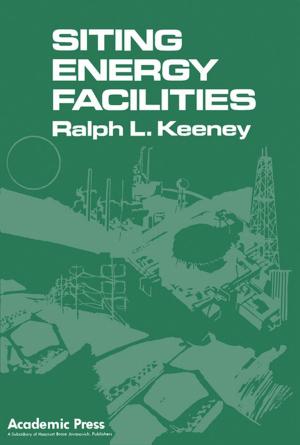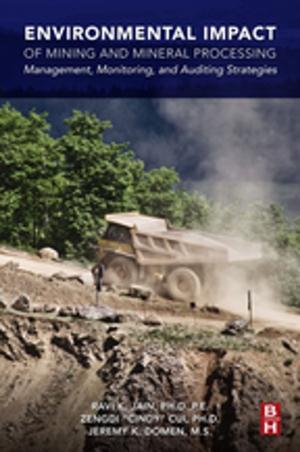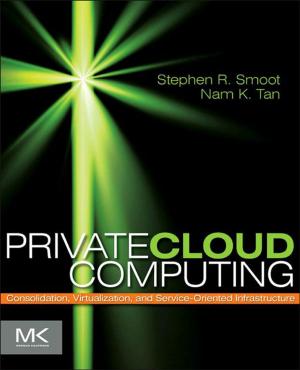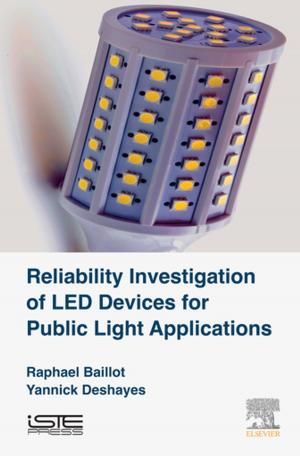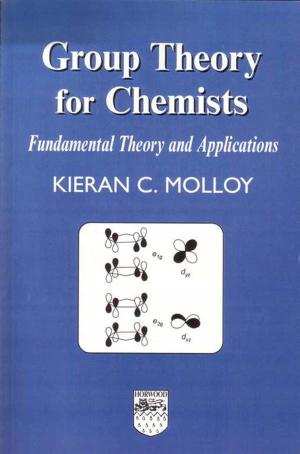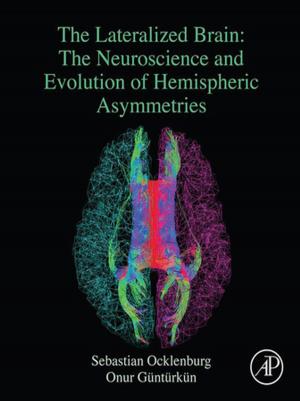Laser Spectroscopy for Sensing
Fundamentals, Techniques and Applications
Nonfiction, Science & Nature, Science, Physics, Spectrum Analysis, Technology, Optics| Author: | ISBN: | 9780857098733 | |
| Publisher: | Elsevier Science | Publication: | February 15, 2014 |
| Imprint: | Woodhead Publishing | Language: | English |
| Author: | |
| ISBN: | 9780857098733 |
| Publisher: | Elsevier Science |
| Publication: | February 15, 2014 |
| Imprint: | Woodhead Publishing |
| Language: | English |
Laser spectroscopy is a valuable tool for sensing and chemical analysis. Developments in lasers, detectors and mathematical analytical tools have led to improvements in the sensitivity and selectivity of spectroscopic techniques and extended their fields of application. Laser Spectroscopy for Sensing examines these advances and how laser spectroscopy can be used in a diverse range of industrial, medical, and environmental applications.
Part one reviews basic concepts of atomic and molecular processes and presents the fundamentals of laser technology for controlling the spectral and temporal aspects of laser excitation. In addition, it explains the selectivity, sensitivity, and stability of the measurements, the construction of databases, and the automation of data analysis by machine learning. Part two explores laser spectroscopy techniques, including cavity-based absorption spectroscopy and the use of photo-acoustic spectroscopy to acquire absorption spectra of gases and condensed media. These chapters discuss imaging methods using laser-induced fluorescence and phosphorescence spectroscopies before focusing on light detection and ranging, photothermal spectroscopy and terahertz spectroscopy. Part three covers a variety of applications of these techniques, particularly the detection of chemical, biological, and explosive threats, as well as their use in medicine and forensic science. Finally, the book examines spectroscopic analysis of industrial materials and their applications in nuclear research and industry.
The text provides readers with a broad overview of the techniques and applications of laser spectroscopy for sensing. It is of great interest to laser scientists and engineers, as well as professionals using lasers for medical applications, environmental applications, military applications, and material processing.
- Presents the fundamentals of laser technology for controlling the spectral and temporal aspects of laser excitation
- Explores laser spectroscopy techniques, including cavity-based absorption spectroscopy and the use of photo-acoustic spectroscopy to acquire absorption spectra of gases and condensed media
- Considers spectroscopic analysis of industrial materials and their applications in nuclear research and industry
Laser spectroscopy is a valuable tool for sensing and chemical analysis. Developments in lasers, detectors and mathematical analytical tools have led to improvements in the sensitivity and selectivity of spectroscopic techniques and extended their fields of application. Laser Spectroscopy for Sensing examines these advances and how laser spectroscopy can be used in a diverse range of industrial, medical, and environmental applications.
Part one reviews basic concepts of atomic and molecular processes and presents the fundamentals of laser technology for controlling the spectral and temporal aspects of laser excitation. In addition, it explains the selectivity, sensitivity, and stability of the measurements, the construction of databases, and the automation of data analysis by machine learning. Part two explores laser spectroscopy techniques, including cavity-based absorption spectroscopy and the use of photo-acoustic spectroscopy to acquire absorption spectra of gases and condensed media. These chapters discuss imaging methods using laser-induced fluorescence and phosphorescence spectroscopies before focusing on light detection and ranging, photothermal spectroscopy and terahertz spectroscopy. Part three covers a variety of applications of these techniques, particularly the detection of chemical, biological, and explosive threats, as well as their use in medicine and forensic science. Finally, the book examines spectroscopic analysis of industrial materials and their applications in nuclear research and industry.
The text provides readers with a broad overview of the techniques and applications of laser spectroscopy for sensing. It is of great interest to laser scientists and engineers, as well as professionals using lasers for medical applications, environmental applications, military applications, and material processing.
- Presents the fundamentals of laser technology for controlling the spectral and temporal aspects of laser excitation
- Explores laser spectroscopy techniques, including cavity-based absorption spectroscopy and the use of photo-acoustic spectroscopy to acquire absorption spectra of gases and condensed media
- Considers spectroscopic analysis of industrial materials and their applications in nuclear research and industry
